Understanding the labeling of New World wines is essential for anyone interested in the diverse landscape of modern viticulture. New World wines, defined broadly as those originating outside the traditional winemaking regions of Europe and the Middle East, exhibit a variety of styles, flavors, and techniques reflective of their respective geographies and cultures.
These wines are often distinguished by their more fruit-forward profiles and experimental winemaking approaches compared to their Old World counterparts.
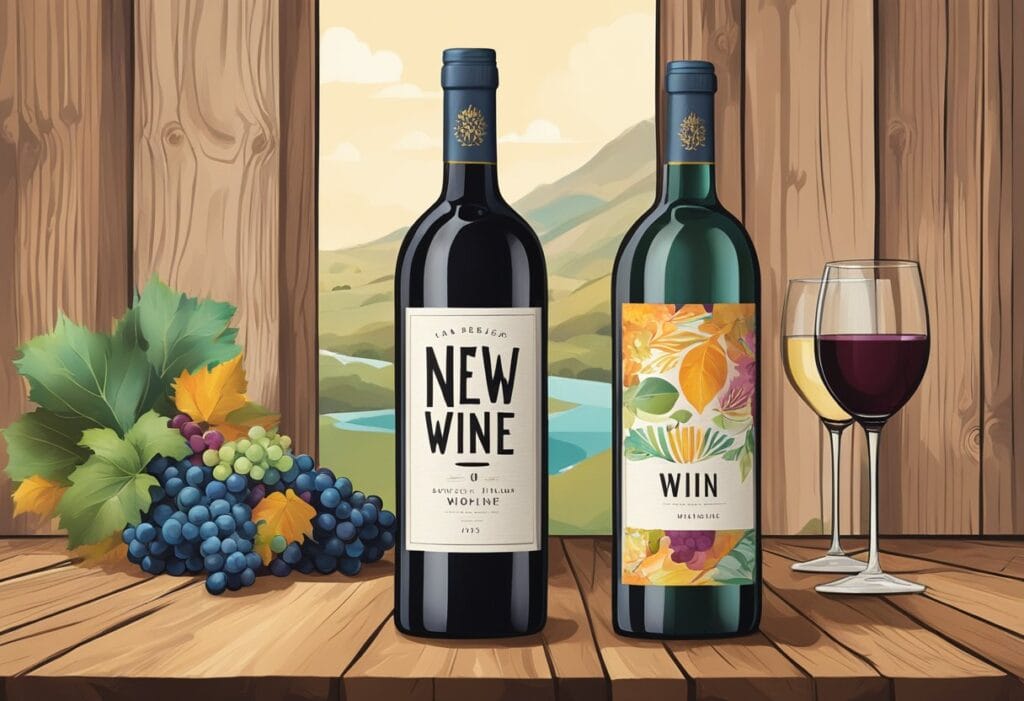
When examining a New World wine label, you’ll find key pieces of information that can help you understand what to expect from the wine inside. Labels typically highlight the grape variety, which is given prominence due to the varietal’s significant role in the character of the wine.
Also, the region of origin is specified, offering insight into the environmental and climatic conditions that have influenced the wine’s development. The labels are a gateway to the less regulated, more innovation-prone New World wineries that enjoy the freedom to craft wines expressing their unique terroirs and winemaker’s vision.
Key Takeaways
- New World wine labels emphasize grape varieties and innovative winemaking.
- Labels provide clues to the wine’s style and the region’s climatic influences.
- New World labeling practices reflect the dynamic nature of these evolving wine regions.
Historical Context of Wine Labeling
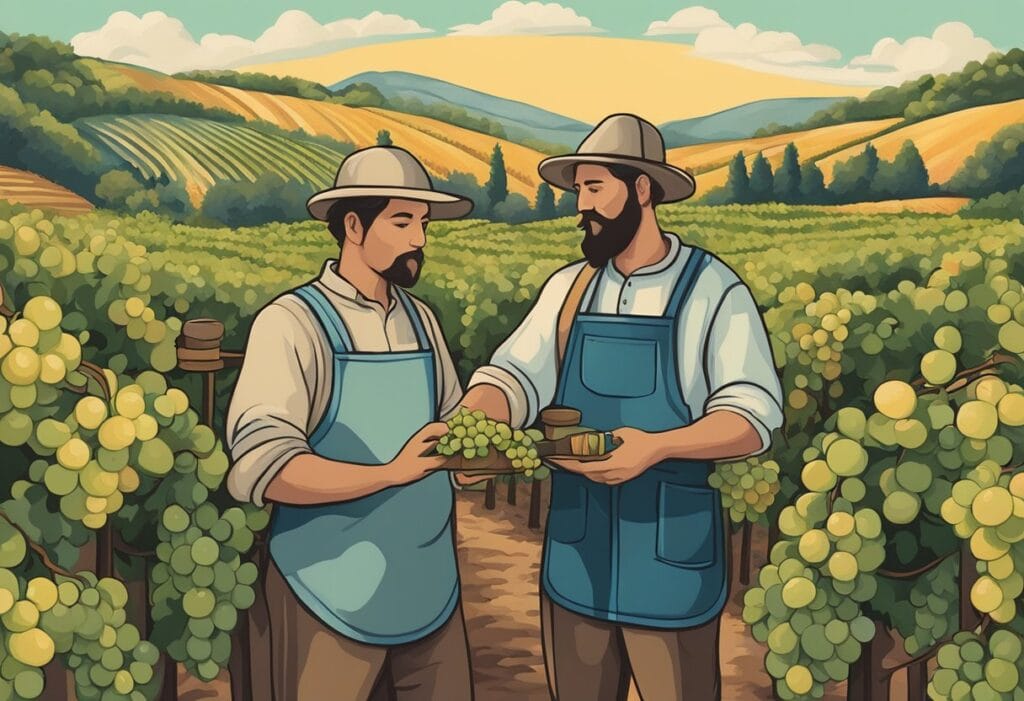
Wine labeling has significantly evolved over time, reflecting the geographic, cultural, and legal landscapes from which wines originate. In understanding labels, you encounter the stories of traditions and innovations that span centuries.
Evolution of Old World Wine Labels
Wine labels in Europe have a deeply rooted history. Countries like France, Italy, and Spain, defining the Old World of wine, emphasize tradition and appellation. This method indicates not just the grape variety but also where the grapes were cultivated, which in turn hints at the style of the wine. This link to place was so significant that notable regions would often be the most prominent names on a bottle, overshadowing the varietal.
For instance, if you have seen a French wine label with ‘Chablis’ or ‘Puligny-Montrachet’, you have seen this tradition in action; these place names inform you about the origins of the wine more than the type of grape. It’s a heritage of viticulture that demonstrates a respect for land and the nuanced differences imparted by each region’s terroir—climatic, geographical, and geological characteristics that influence the taste and quality of the wine produced.
Emergence of New World Wine Labeling
Contrastingly, New World wine labels, from regions outside traditional European winemaking areas, focus on the type of grape and brand. Countries such as Argentina, Australia, and the United States often feature the name of the grape variety prominently.
This approach reflects a newer understanding of wine that prioritizes the type of wine over the specifics of where it’s from. This can make labels potentially more accessible to you if you are looking for a specific grape variety rather than a region-Specific taste profile.
The label of a New World wine might tell you the story of the winemaker or the winery’s philosophy alongside the grape variety and region. As these wines come from regions with fewer constraints regarding winemaking practices, there’s an emphasis on innovation and a more modern approach to both making wine and marketing it to you, the consumer.
Regulatory Overview
When exploring the regulatory landscape of wine labeling, you’ll uncover stark contrasts between Old World and New World winemaking regions. In New World countries like Australia, South Africa, and Chile, wine labels are subject to national regulations which can differ significantly from European standards.
Australia implements a label integrity program ensuring varietals and regions stated on labels correspond accurately to what’s inside the bottle. A “Wine Australia” approval number is often a sign of compliance.
Meanwhile, South Africa focuses on the Wine of Origin system, regulating the regions and production standards. Certifying seals on labels indicate adherence to these rules.
Chile offers a unique system balancing freedom and regulation, permitting winemakers to experiment while maintaining certain classification guidelines for labeling.
Switching to the Old World, European wine is meticulously classified. Systems like the French AOC and Italian DOCG set stringent standards based on geographical areas as well as grape varieties and winemaking practices. A bottle carrying an AOC or DOCG label comes with a guarantee of meeting these high standards.
For instance, in Italy, DOCG (Denominazione di Origine Controllata e Garantita) represents the pinnacle of quality, with each region having unique rules to ensure the authenticity and quality of their wines.
In France, AOC (Appellation d’Origine Contrôlée) requires wines to comply with tight regulations, rooted in the concept of terroir.
The U.S. employs a different approach, using AVA (American Viticultural Area) designators for wines from particular regions while also imposing federal labeling regulations that must be followed.
Your understanding of this spectrum of classification and regulation provides a basis for appreciating the nuances in wine quality and origin. To delve deeper into wine classifications and appellations across these regions, you can explore further.
Understanding Wine Labels
When you pick up a bottle of wine, the label is your guide to its contents. It reveals the wine’s origin, identity, and quality through specific terms and designations that are regulated and standardized to help you make an informed choice.
Terroir and Appellation
Terroir refers to the unique characteristics of a place that give a wine its distinctive flavor. This includes the climate, soil, and landscape. The appellation is a specific region where the grapes are grown and is a key indication of terroir. New World wine labels often place a significant emphasis on the grape variety, while Old World wine labels are more likely to highlight the appellation, as the region is closely tied to the style and flavor profile of the wine.
| Aspect | Old World | New World |
|---|---|---|
| Focus | Appellation | Grape Variety |
| Example Regions | Bordeaux | Napa Valley |
Labeling Terminology and Designations
Wine labels include various terminologies and designations that can indicate the style and quality. Terms like “Reserve” or a particular designation could suggest a higher quality wine with specific regulations that vary from region to region; however, these terms are not always legally regulated, especially in New World wines.
- Old World may imply traditional practices and often carries legal significance.
- New World terms may be more marketing-driven and less regulated.
Vintage, Varietal and Vineyard Information
Vintage refers to the year in which the grapes were harvested and can be a strong indicator of quality, as each year’s climate affects the flavor of the wine. The varietal designation indicates the type of grape used in the wine production. Single varietal wines will list the specific grape, while blends may simply state “red blend” or “white blend.” Vineyard names, if included, can denote wines sourced from a select parcel of land, offering a unique expression of the terroir.
- Vintage: 2020
- Varietal: Chardonnay
- Vineyard: Sunset Ridge
Look for the alcohol by volume (ABV) on the label to understand the alcohol content, which can also give clues about the wine’s body and sweetness level. Remember, these details reflect the winemakers’ decisions during the winemaking process and play a crucial role in the character of the wine you enjoy.
Grape Varieties and Wine Styles
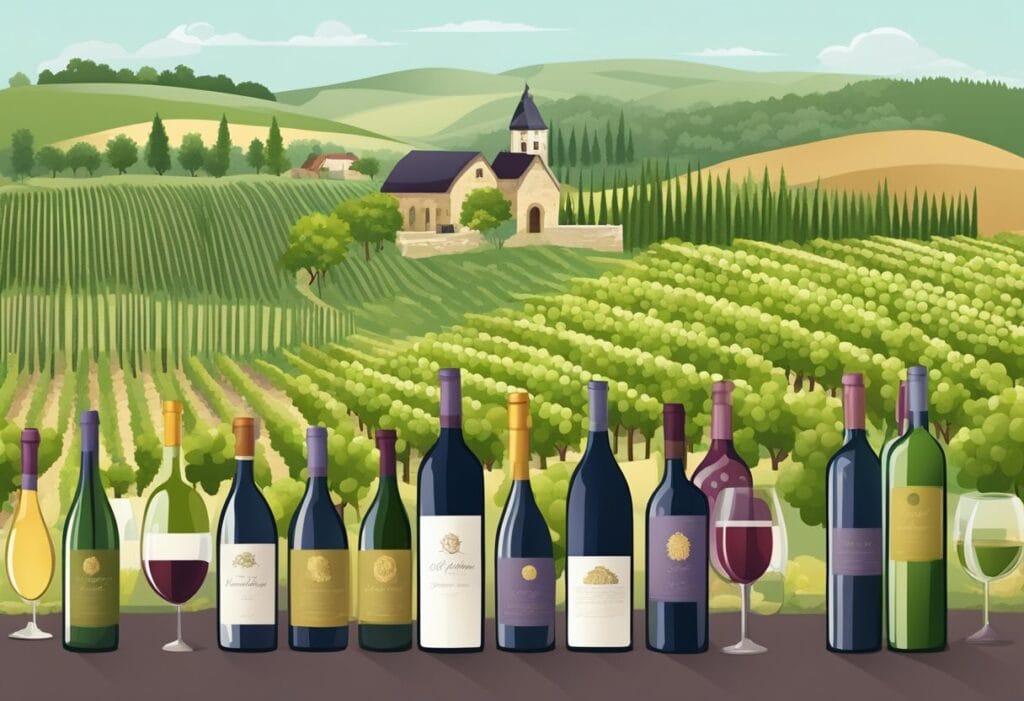
When you explore New World wines, you’re delving into a realm where the labeling emphasizes the type of grape variety used rather than the region. Unlike their Old World counterparts, where earthiness and regionality take precedence, New World wines typically highlight bold fruit flavors and a sense of innovation.
The common grape varieties found on New World wine labels include:
- Cabernet Sauvignon: Known for its full-bodied profile with rich fruit tones and a robust presence.
- Merlot: Often presents a smoother, more supple texture with an approachable mix of fruits.
- Pinot Noir: Delivers a more delicate array of flavors, from ripe berries to floral notes.
- Chardonnay: This grape can produce wines ranging from buttery and oak-aged to crisp and mineral-forward.
- Sauvignon Blanc: Expect a zesty and refreshing taste with an accent on tropical or citrus fruits.
- Malbec: Especially popular in Argentina, it offers deep fruitiness and can feature spicy undertones.
Here’s a quick overview of wine styles based on these varieties:
| Grape Variety | Wine Style Characteristics |
|---|---|
| Cabernet Sauvignon | Bold, Tannic, Dark Fruits |
| Merlot | Soft, Rounded, Red Fruits |
| Pinot Noir | Delicate, Berry-Scented |
| Chardonnay | Versatile, From Citrusy to Creamy |
| Sauvignon Blanc | Crisp, Aromatic, Herbaceous |
| Malbec | Juicy, Plummy, Sometimes Spicy |
Remember, your experience with these wines can vary widely as winemakers in New World regions experiment with different production methods, aging processes, and blends. Common blends may include grapes like Cabernet Franc, Tempranillo, and Petit Verdot, adding complexity and unique regional signatures to the wine. When you’re selecting a New World wine, pay attention to these varietal cues to anticipate the style and flavor profile the wine will present.
Geographical Influences on Wine
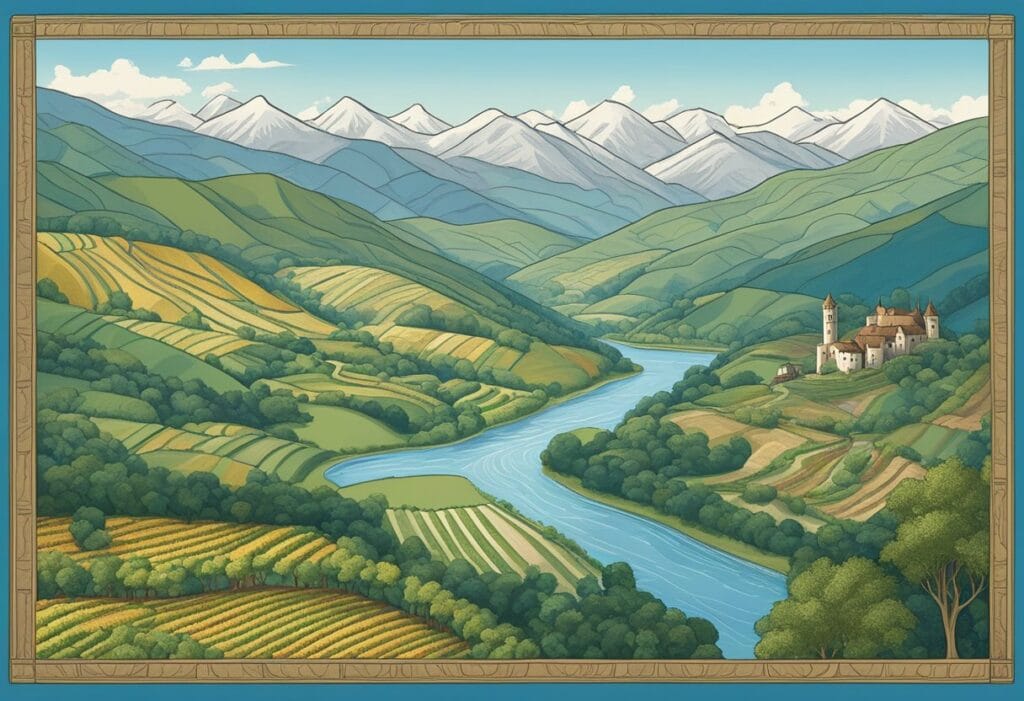
Geography plays a pivotal role in wine production, delineating regions where environmental conditions directly impact the vines. Old World wine regions, such as Bordeaux, Rioja, and Tuscany, emphasize terroir, a term comprising soil type, climate, and terrain, believing it to instill unique qualities in their wines.
In contrast, New World regions, like Napa Valley, Chile, Mendoza, and Marlborough, often focus on innovation and varietal expression. Despite the differences, both the Old World and New World recognize geography as a profound influencer of wine characteristics.
Climate is crucial; cooler regions often yield wines with higher acidity and lighter body, whereas warmer climates, through examples like Chilean wines, produce richer and more robust wines.
Grape-growing regions have varying geographical features: Napa Valley’s varied topography allows for a diverse range of grapes to thrive. Meanwhile, the ancient river beds in Mendoza deliver mineral-rich wines, indicative of the intense bond between a wine’s flavor profile and its geographic origin.
The concept of terroir captures the essence of geographical influence. Old World winemakers might argue that this is the soul of wine, encapsulating not just the environment but also the history and culture of a wine-producing area. The story of the European wine expansion demonstrates how these regional identities and qualities have been cherished over centuries.
While each region’s approach may differ, understanding the link between wine and geography offers you an appreciation of the array of flavors each bottle can represent, be it from dusty plains or sun-soaked hillsides.
Cultural Impact on Wine Labeling
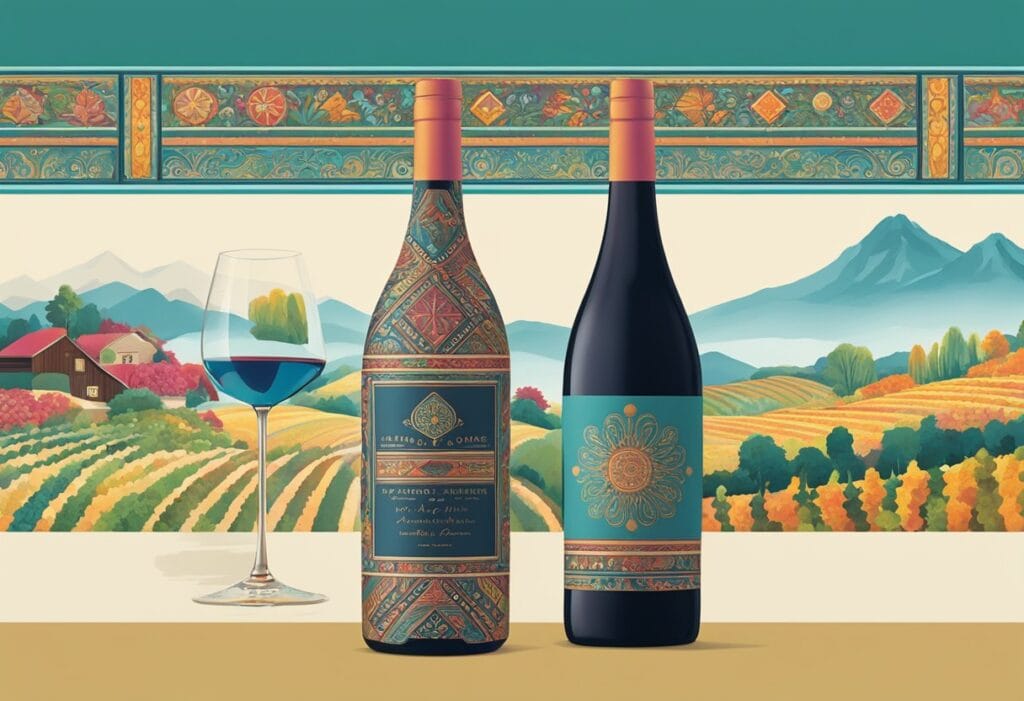
Wine labeling is shaped profoundly by cultural moments and market forces, reflecting a blend of tradition and innovation.
Traditional vs. Modern Wine Label Design
Old World wineries often adhere to conventional design elements, showcasing the winery’s heritage and the wine’s terroir. These labels might display family crests or imagery of the estate, emphasizing tradition and heritage.
In contrast, New World wineries have embraced modern design, allowing for more experimentation in both the style and taste of wines. These labels often reflect a more casual and accessible image, which resonates with contemporary consumers seeking novel experiences.
Consumer Perception and Market Trends
Your perception of wine labels influences not only the buying decision but also the overall experience of the wine. Winemakers understand that a label is not just a branding tool; it’s a narrative of the wine’s journey from grape to glass.
The industry trends reveal a shift towards labels that tell a story or evoke a particular lifestyle, aligning the product with your values and aspirations. Wine lists play a pivotal role here, curating selections that not only represent varieties but also the character and ethos of the winemaking process.
The Role of Wine Lists in Promoting Varieties
Wine lists provide you with an curated exploration of grape varieties and winemaking styles. A well-crafted wine list can influence your choice by spotlighting both well-known and obscure varieties, guiding you through a tasting journey.
This is where winemakers from newer regions differentiate themselves, embracing the spirit of exploration and experimentation to shape your palate and preferences. These offerings celebrate diversity in winemaking and can often lead to delightful discoveries.
Challenges and Controversies in Wine Labeling
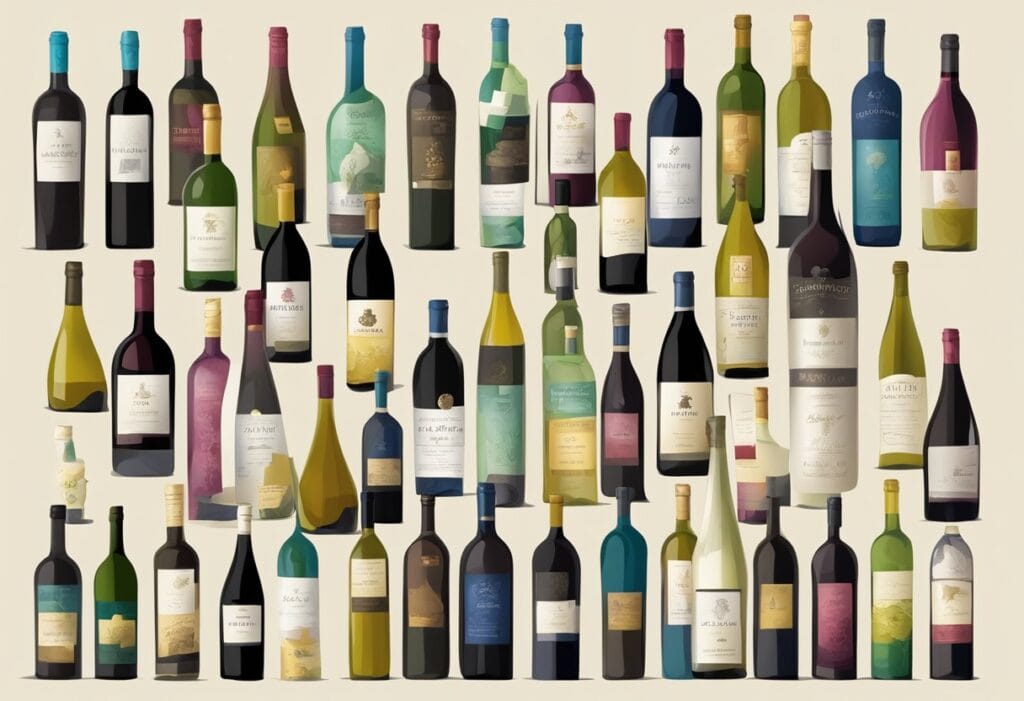
In the global wine market, labeling is at the forefront of debate. On one hand, tradition in Old World wines upholds centuries-old classifications, which often emphasize geographical origin over grape variety. Conversely, New World wines are exploring innovative labeling strategies that reflect winemaking techniques and quality in a more direct manner.
For consumers, accurate labels are crucial, but the industry faces the ongoing issue of mislabeling. In some cases, wines may inaccurately reflect their contents, leading to controversies over authenticity. As wines from the New World strive for recognition, some adopt practices that conflict with established regulations of the Old World, raising questions about standards and transparency.
Experimentation in winemaking brings innovative techniques to the forefront, yet integrating these into labeling practices can be contentious. You might find references to the impact of the Industrial Revolution on winemaking, illustrating how technological advancements have influenced wine production and consequently, labeling.
Regulatory bodies work to cement rules that ensure label accuracy, but global considerations must be balanced with domestic expectations. Industry responses to calls for clearer labeling reflect the tension between maintaining quality and embracing experimentation.
The wine industry has a storied past, with numerous events shaping its direction. You might explore the impact of the Prohibition on the wine industry, noting how such historical shifts resulted in lasting changes to production and labeling.
Ultimately, the push and pull between preserving traditions and fostering innovation define the controversies in wine labeling. Each classification and special selection offers a glimpse into the intricate balance of historical practices and contemporary market demands.

